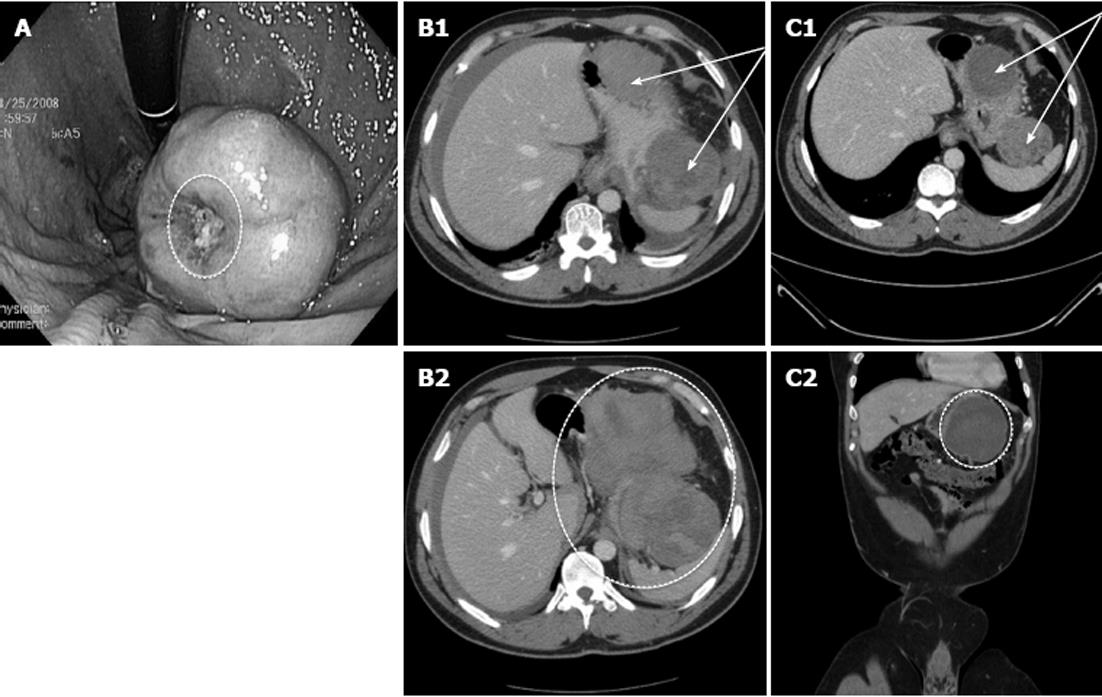Copyright
©2012 Baishideng Publishing Group Co.
World J Gastroenterol. Dec 14, 2012; 18(46): 6720-6728
Published online Dec 14, 2012. doi: 10.3748/wjg.v18.i46.6720
Published online Dec 14, 2012. doi: 10.3748/wjg.v18.i46.6720
Figure 1 Clinical images of complicated gastrointestinal stromal tumors.
A: Large intraluminal gastric gastrointestinal stromal tumors (GIST) with punctate central ulceration. The bleeding ulcer was treated endoscopically with sclerotherapy and electrocautery (cauterized tissue; white oval). The patient had an interval resection electively without additional hemorrhage from the tumor; B: Acute presentation of a patient with a ruptured gastric GIST with hemoperitoneum. These images represent contrast-enhanced computed tomography (CT) scan from a patient with a large extraluminal gastric GIST along the greater curvature of the stomach. B1 demonstrates axial CT images of the bi-lobed tumor with irregular borders (arrows); B2 shows additional axial images at the caudal extent of gastric tumor with layering of blood in the splenic recess (oval). He was diagnosed with hemoperitoneum and was resuscitated with packed red blood cells, fresh frozen plasma, and platelets; the patient was on antiplatelet therapy at the time of admission. He stabilized and had an upper endoscopy/ultrasonography for tissue diagnosis and to plan definitive treatment; C: Ruptured gastric GIST following conservative management. Contrast-enhanced CT images following a six-week period of conservative management of the patient with ruptured gastric GIST. C1 demonstrates the more organized bi-lobed tumor with distinct borders (arrows); C2 shows coronal images of the organized hemorrhagic component within the splenic recess after a period of observation (oval). Ultimately this patient had an interval open subtotal gastrectomy for a high-grade GIST.
- Citation: Roggin KK, Posner MC. Modern treatment of gastric gastrointestinal stromal tumors. World J Gastroenterol 2012; 18(46): 6720-6728
- URL: https://www.wjgnet.com/1007-9327/full/v18/i46/6720.htm
- DOI: https://dx.doi.org/10.3748/wjg.v18.i46.6720









